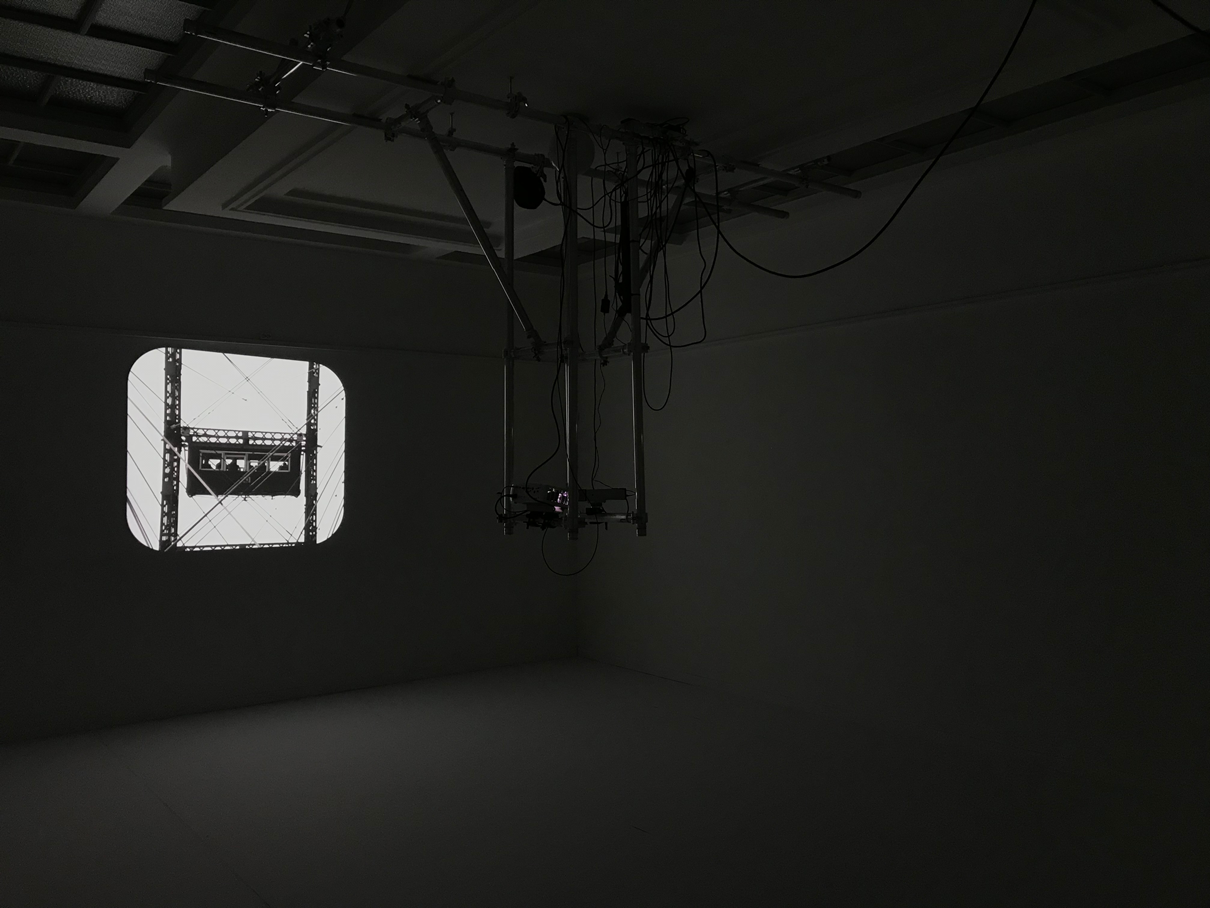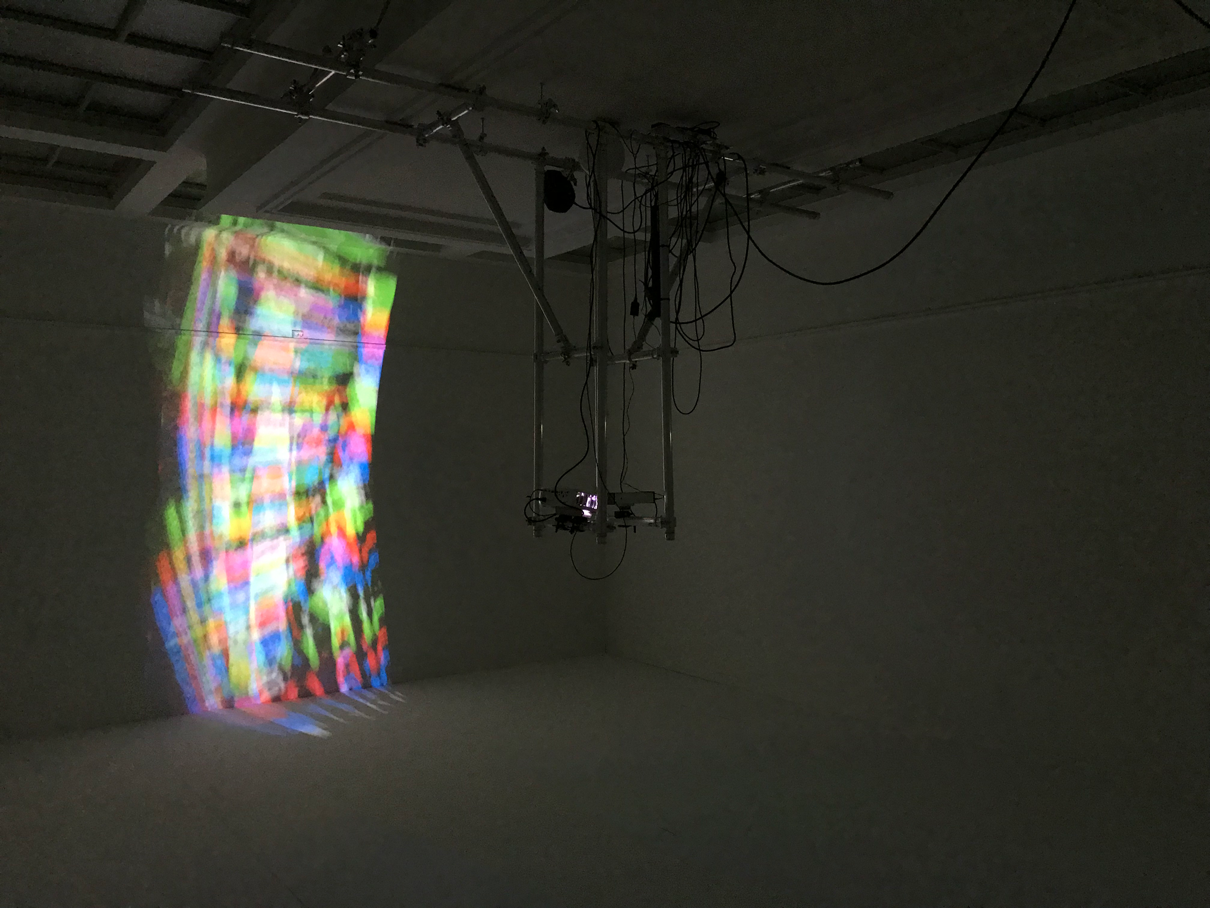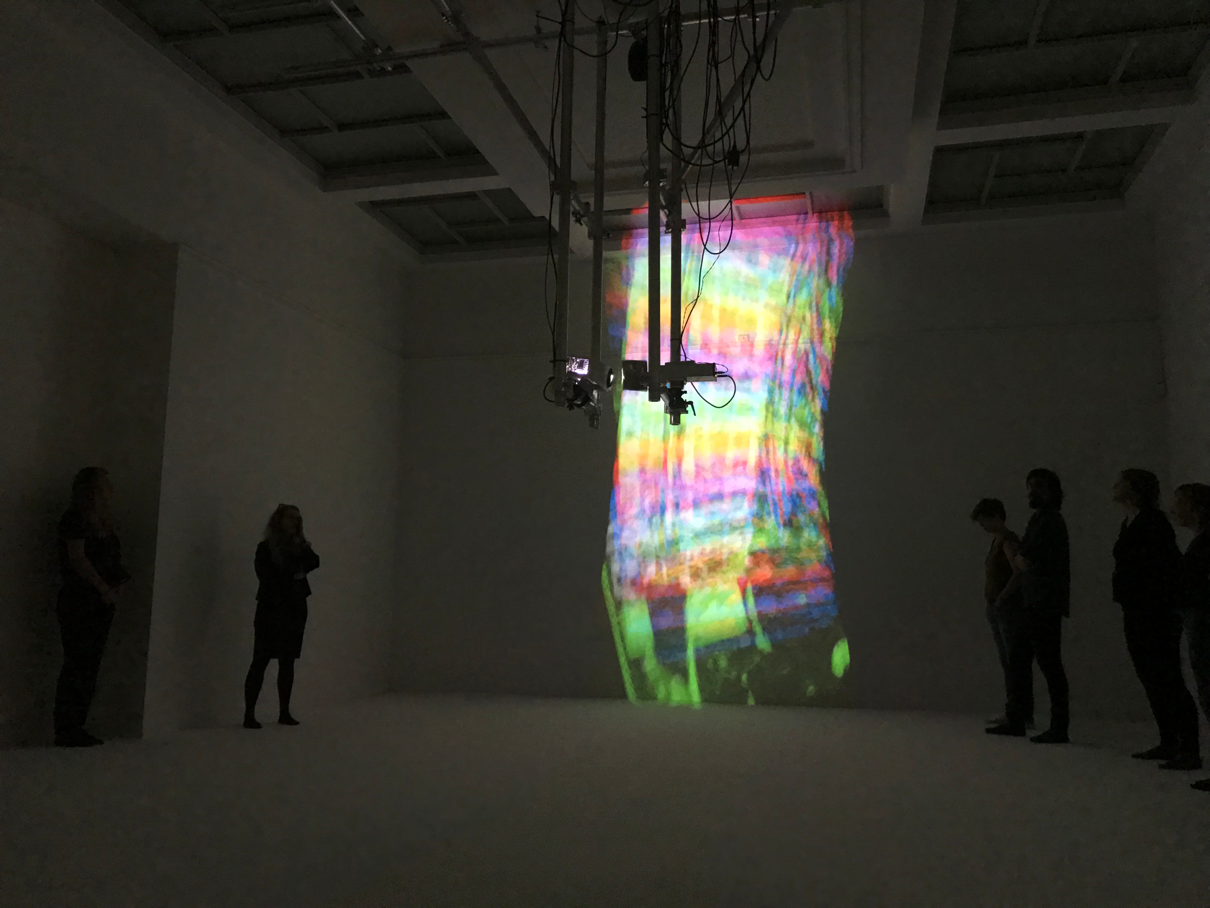FERRISCOPE
1893–2021
Single-channel robotic video installation. HD video, single-chip DLP video projector, sound, custom robotics.
In their study of the ongoing surge in new aerial imaging technologies such as satellites and drones, Bull.Miletic proposes the name proxistance to describe a visual paradigm in our time. Perhaps best exemplified by Google Earth, this paradigm combines proximity and distance in one image, zoom, or flight.
Bull.Miletic's intention with Ferriscope is to investigate how this visual paradigm of proxistance gains precedence beyond the screen. The artists suggest that giant observation wheels, popping up in cities around the world, can be seen as prime examples of proxistance.
In 2000, the 135-meter-high London Eye (re)launched the interest in large-scale urban observation wheels and propelled a rivaling appetite for ever grander designs on a global scale. As these wheels transport their passengers on circular journeys between detailed close-ups and vertiginous overviews, Bull.Miletic investigates how they participate in the smooth proxistant vision that has multiplied across the 21st century media landscape.
In the kinetic video installation Ferriscope, Bull.Miletic investigates this apparent boom of observation wheels across “world-class cities” by staging a meeting between some of the most iconic examples of wheels in operation today and the original Ferris Wheel, created by George W. G. Ferris Jr. in 1893 for the World's Columbian Exposition in Chicago.
The Ferris Wheel experience and construction can be seen in line with the genealogy of immersive imaging practices, expanding upon the invention of the painted panorama, diorama, and, eventually, the aerial moving image. The installation addresses this lineage by merging technological imaging with observation-wheel rides.
Predating the official invention of the moving image by only a year, the view from the original, first Ferris Wheel was not documented on film. Hence, in the Ferriscope installation, the artists combined video sequences they shot from the London Eye, the Las Vegas High Roller, and the Wiener Riesenrad with a sequence of 24 animated, archival photographs taken from the original Ferris Wheel to create an impression of what it would have been.
Moreover, working on the principle of a thaumatrope, a pre-cinematic optical device, the installation stages a meeting between the Ferris Wheel and the color wheel in a single-chip DLP video projector, becoming a visual experiment, suspended between total overview and control on the one hand, and vertigo and instability on the other.
Bull.Miletic’s intention is to bring the combination of mechanical movement and the aerial view from the Ferris Wheel to the forefront, as a force in cinematic revelation and curiosity. In doing so, the artists reveal and expand on the technical mediation between rides, cinema, and aerial imaging.
Bull.Miletic argues that the introduction of such gigantic observation rides into the urban environment powerfully suggests an idealized perception of the city as a spectacular, cinematic “establishing-shot”. This simple and seemingly benign maneuver plays a key role in the process of gentrification that transforms the city itself into a site for visual consumption.
Ferriscope is made in collaboration with Tom Gunning, Professor of Cinema and Media Studies, University of Chicago, and Jan C. Schacher, Zurich University of the Arts, Institute for Computer Music and Sound Technology. Torbjørn Helgesen Nordvik, Magnus Sjursen, Mikael Valen, and Jens Brynildsen at Bitraf, Oslo made significant contributions to mechanical and electronic engineering.
Ferriscope was nominated for the New Technological Art Award, Zebrastraat, Ghent, Belgium in 2022 and it received the Excellence Award, from the Japan Media Arts Festival in 2020.


